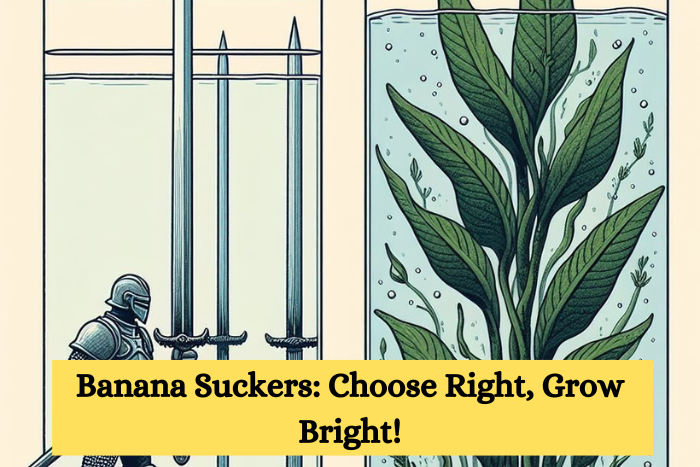Banana cultivation is a significant agricultural activity worldwide, known not just for its economic value but also for its cultural importance in many regions.
Central to the success of banana farming is an often overlooked yet crucial aspect: the selection of banana suckers.
This introductory guide aims to shed light on the significance of choosing the right banana suckers, an essential step for ensuring the health and productivity of banana plants.
Banana plants are unique in their growth process; they do not grow from seeds but rather from suckers, which are shoots that develop from the base of a banana plant.
These suckers, if selected and nurtured correctly, grow into new banana plants, thereby continuing the cycle of banana cultivation.
However, not all suckers are created equal.
Banana Sucker Selection: Your Key to Thriving Plants!
The choice of sucker plays a pivotal role in determining the overall health, yield, and longevity of the banana plant.
Therefore, understanding the nuances of sucker selection becomes imperative for any banana farmer or enthusiast.
In this article, “Banana Sucker Selection Advice,” we delve deep into the world of banana suckers.
We aim to equip you with the knowledge and tools necessary to identify and select the best suckers for your banana plants.
From differentiating between the types of suckers to recognizing the signs of a healthy sucker, this guide covers all the essential aspects of sucker selection.
We also address common pitfalls and misconceptions in the process, ensuring you have a comprehensive understanding of the task at hand.
Whether you are a seasoned banana farmer, a small-scale cultivator, or just a gardening enthusiast curious about banana plant propagation, this article is designed to provide you with valuable insights and practical advice.
By the end of this guide, you will be well-equipped to make informed decisions in your banana sucker selection, setting the foundation for a thriving banana plantation.
Understanding Banana Suckers
At the heart of successful banana cultivation lies the understanding of banana suckers.
These are not just mere offshoots; they are the future of the banana plantation, dictating the health and productivity of the crop.
In this section, we delve into what banana suckers are, the types available, and why their selection is a critical step in banana farming.
What are Banana Suckers?
Banana suckers, often referred to as pups or shoots, emerge from the rhizome, which is the underground part of the banana plant.
These suckers are essentially clones of the mother plant, possessing the same genetic makeup.
As they grow, suckers absorb nutrients and water from the mother plant.
In due course, they develop their roots and can be separated to grow independently, forming new banana plants.
This vegetative propagation is a hallmark of banana cultivation, as bananas rarely produce viable seeds.
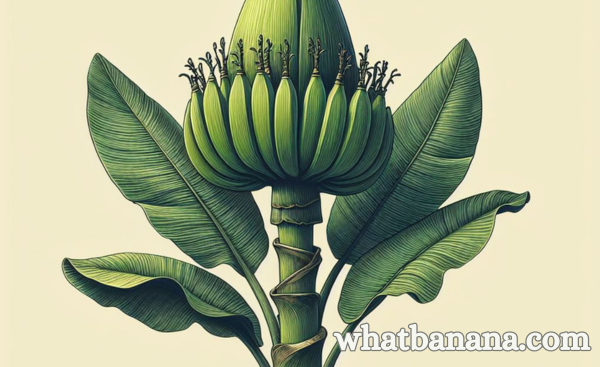
Types of Banana Suckers
Understanding the different types of banana suckers is crucial for effective selection:
- Sword Suckers: These are the ideal choice for propagation. Sword suckers have narrow, sword-like leaves and a robust structure. They possess a strong root system and are more likely to develop into healthy, fruit-bearing plants. Their narrow leaves indicate a higher ratio of underground to above-ground growth at the early stages, which is desirable for a strong start.
- Water Suckers: Contrary to sword suckers, water suckers have broader leaves and a weaker structure. They often emerge due to stress conditions in the mother plant, such as poor nutrition or water scarcity. Water suckers are less preferable for propagation as they tend to have a weaker root system and are less vigorous, which can lead to lower yield and susceptibility to diseases.
The Importance of Sucker Selection
The choice of sucker directly impacts the future growth and productivity of the banana plant.
Selecting the right type of sucker ensures a healthy and vigorous plant, which is more resistant to diseases and capable of producing high-quality fruit.
Poor sucker selection can lead to weaker plants, reduced yield, and increased susceptibility to pests and diseases, compromising the entire cultivation process.
In summary, banana suckers are the lifeline of banana cultivation.
Choosing the right type of sucker – typically the sword sucker – is fundamental for establishing a healthy and productive banana plantation.
This choice sets the stage for the entire lifecycle of the banana plant, influencing everything from growth rate to fruit quality.
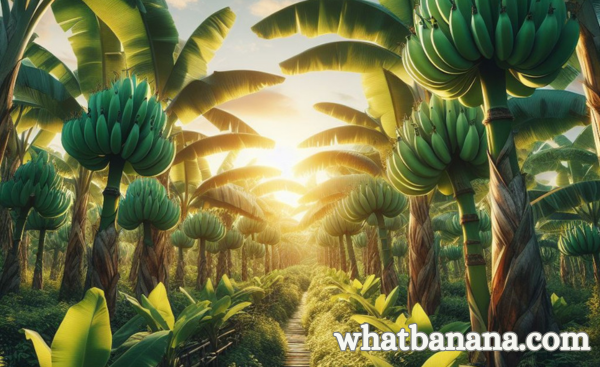
Criteria for Selecting Healthy Banana Suckers
The success of a banana plantation hinges significantly on the selection of healthy suckers.
It’s a decision that can affect not just the immediate growth of the plant but also its long-term health and productivity.
This section provides a detailed guide on the criteria to consider when selecting healthy banana suckers, ensuring that your plantation thrives from the very beginning.
Physical Characteristics of a Healthy Sucker
- Size and Vigor: A healthy sucker should be robust and vigorous, typically about 3-4 feet tall. This size indicates that the sucker has accumulated enough energy reserves to support independent growth once separated from the mother plant.
- Leaf Structure: Look for suckers with sword-like leaves, indicative of the desirable sword sucker variety. These leaves should be firm, green, and free from any signs of wilting or yellowing, which can indicate poor health.
- Stem Quality: The stem should be stout and upright, showing no signs of damage or rot. A healthy stem is essential for the sucker’s survival during and after transplantation.
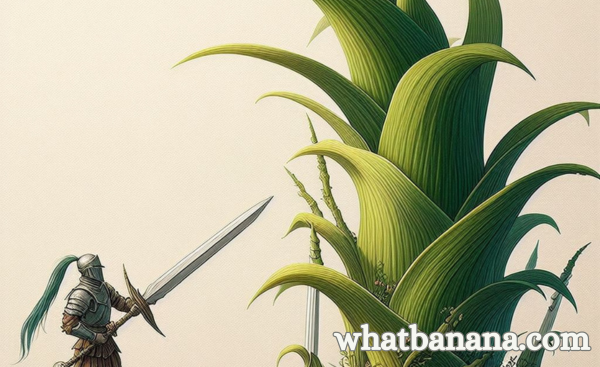
Evaluating the Root System
- Root Development: A good sucker will have a well-developed root system. Check for numerous, healthy roots that are firm and not overly fragile. Avoid suckers with very few or overly delicate roots, as they might struggle to establish themselves after transplanting.
- Absence of Pests and Diseases: Inspect the roots for signs of pests or diseases. Healthy roots should be free from cuts, bruises, or any abnormalities. Look out for symptoms like unusual coloration, soft spots, or the presence of insects, which can all be red flags.
Signs of Diseases and Pests
- Leaf Condition: Examine the leaves for any signs of disease or pest infestation. Common issues include spots, streaks, or holes in the leaves, which could indicate fungal diseases or insect damage.
- Stem Health: Check the stem for any signs of rotting, unusual growths, or lesions. These symptoms can be indicative of diseases that could weaken the sucker and subsequently the entire plant.
- Overall Plant Vigor: A lackluster appearance, stunted growth, or a generally unhealthy look can be signs of underlying issues. Trust your instincts – if a sucker doesn’t look vigorous and healthy, it’s probably not the best choice.
In conclusion, selecting a healthy banana sucker involves careful inspection of its physical characteristics, root system, and overall health.
By choosing a sucker that is vigorous, well-rooted, and free from diseases and pests, you set the stage for a productive banana plantation.
This meticulous selection process is a small but critical investment in the future health and yield of your banana plants.
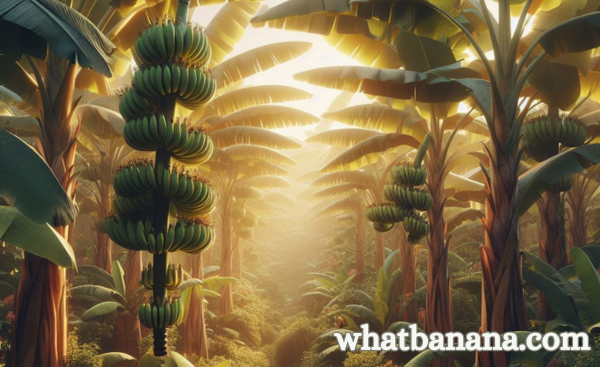
Timing and Techniques for Sucker Selection
The timing and method of selecting and separating banana suckers are as crucial as the selection criteria.
Proper timing ensures that the sucker has matured sufficiently to survive independently, while correct techniques minimize damage to both the sucker and the mother plant.
This section outlines the optimal timing and recommended techniques for sucker selection.
Optimal Timing for Sucker Selection
- Maturity of the Sucker: The best time to select a sucker is when it has reached a height of about 3-4 feet. This indicates that it has developed enough to survive on its own after being separated from the mother plant.
- Seasonal Considerations: The ideal time for sucker separation is during the early rainy season. Adequate moisture at this time aids in the sucker’s root development and eases the stress of transplantation. In regions with a distinct dry season, it’s advisable to avoid sucker separation during this period due to the higher risk of water stress.
- Mother Plant’s Cycle: It’s advisable to select suckers from a mother plant that has either recently fruited or is about to fruit. This timing ensures that the mother plant has enough energy reserves to support the sucker without compromising its own health.
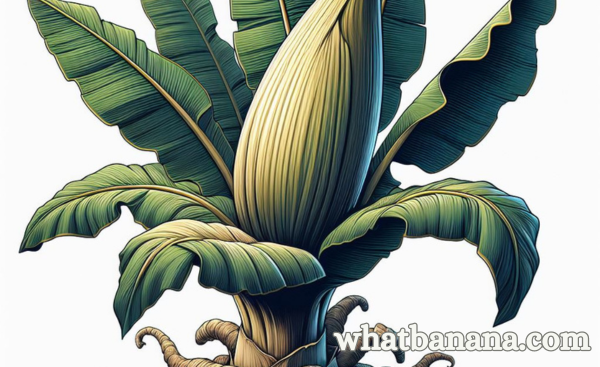
Techniques for Sucker Separation and Transplantation
- Careful Excavation: Begin by gently digging around the base of the sucker to expose its roots and the connection to the mother plant. Ensure you do not damage the roots of the sucker or the mother plant in the process.
- Clean Separation: Use a sharp, sterilized knife or spade to cleanly cut the sucker from the main rhizome. The cut should be made as close to the mother plant as possible, ensuring the sucker retains a good portion of its root system.
- Preparation for Transplantation: Trim any excessively long roots and remove any weak or damaged leaves. This helps the sucker focus its energy on establishing new roots in its new location.
- Transplanting the Sucker: Plant the sucker in a hole that is sufficiently deep to accommodate its roots. The soil should be well-draining yet moisture-retentive. Water the newly planted sucker generously to help settle the soil around the roots.
In summary, timing, and technique are pivotal in the process of selecting and transplanting banana suckers.
Correct timing ensures the vitality of the sucker and the ongoing health of the mother plant, while proper techniques ensure the survival and future growth of the sucker.
By adhering to these guidelines, farmers and gardeners can significantly improve the success rate of their banana plantations.
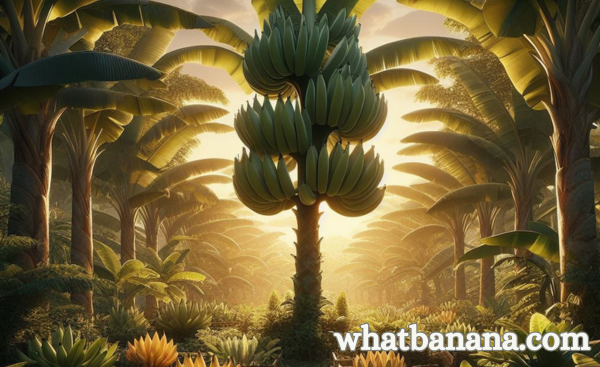
Common Mistakes in Sucker Selection
Selecting the right banana suckers is a nuanced process that, if done incorrectly, can lead to long-term problems in your banana plantation.
Awareness of common mistakes in this process is crucial for both novice and experienced growers.
This section highlights the typical errors to avoid, ensuring a more successful and productive banana cultivation.
Overlooking Sucker Health
- Ignoring Signs of Disease or Pests: One of the most common errors is choosing suckers that show signs of disease or pest infestation. Symptoms like discolored leaves, spots, or weakened stems can be easy to miss but have significant repercussions, leading to weak growth and reduced yield.
- Selecting Water Suckers: Often, due to a lack of understanding, water suckers are chosen for propagation. These suckers, with their broad leaves and weak stems, are less likely to develop into strong, fruit-bearing plants, thus affecting the overall productivity of the plantation.
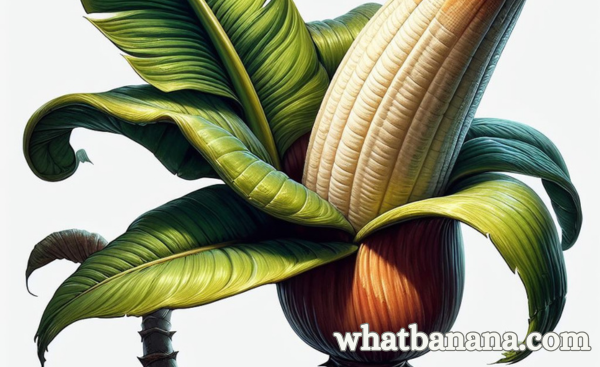
Timing Errors
- Selecting Too Early or Too Late: Timing is crucial in sucker selection. Choosing a sucker that is too young can result in a plant that struggles to establish itself, while selecting too late can reduce the vigor and fruiting potential of the sucker.
- Ignoring Seasonal and Climatic Conditions: Failing to consider the best season for sucker selection, especially in regions with distinct wet and dry seasons, can adversely affect the sucker’s ability to adapt and grow after transplantation.
Improper Separation Techniques
- Rough Handling: Rough handling during separation can damage the sucker’s roots and the mother plant. This can stress the plants, reducing their growth potential and increasing susceptibility to diseases.
- Inadequate Preparation for Transplantation: Not properly preparing the sucker for transplantation, such as by not trimming long roots or failing to water adequately post-transplantation, can hinder the establishment of the sucker in its new environment.
In conclusion, avoiding these common mistakes in sucker selection can vastly improve the health and yield of banana plants.
Paying close attention to the health of the sucker, timing the selection correctly, and using proper techniques during separation and transplantation are key steps in ensuring the success of your banana plantation.
By being mindful of these aspects, growers can significantly enhance the productivity and longevity of their banana crops.

FAQ Section
Q1: How do I differentiate between a sword sucker and a water sucker?
A1: Sword suckers have narrow, sword-like leaves and a robust structure, indicating a strong root system and better growth potential. In contrast, water suckers have broader leaves and a generally weaker structure, making them less ideal for propagation.
Q2: Can I select a sucker from a banana plant that hasn’t fruited yet?
A2: It’s preferable to select suckers from a banana plant that has already fruited or is about to fruit, as this indicates maturity and stability in the mother plant. Selecting from a non-fruiting plant might lead to weaker offshoots.
Q3: How many suckers should I leave on the mother plant?
A3: Ideally, leave one or two healthy suckers on the mother plant to ensure continuous growth and productivity. Overcrowding with too many suckers can lead to competition for nutrients and reduced overall health.
Q4: How do I know if a sucker is healthy enough to transplant?
A4: A healthy sucker for transplanting should be about 3-4 feet tall, have a robust stem, sword-like leaves, and a well-developed root system. It should also show no signs of pests or diseases.
Q5: How deep should I plant a banana sucker?
A5: Plant the banana sucker in a hole deep enough to accommodate its roots comfortably, usually about 12-18 inches deep. Ensure that the soil around the roots is well-settled but not overly compacted.
Q6: How soon can I expect fruit from a transplanted sucker?
A6: A transplanted banana sucker typically takes about 9-12 months to bear fruit, depending on the variety and growing conditions. Proper care and favorable environmental conditions can expedite this process.
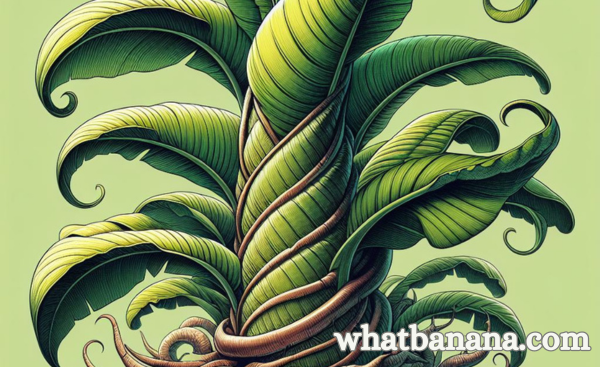
My Final Thoughts
In conclusion, the careful selection of banana suckers is a foundational step in successful banana cultivation.
Understanding the differences between sucker types, selecting healthy specimens, and employing the right timing and techniques is crucial for a thriving plantation.
This guide aims to arm you with the knowledge necessary to make informed choices, ensuring your banana plants are vigorous, productive, and resilient.
Remember, the time and attention invested in selecting the right banana suckers will reap rewards in the form of bountiful harvests, making this meticulous process well worth the effort for any banana grower.
